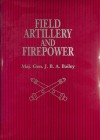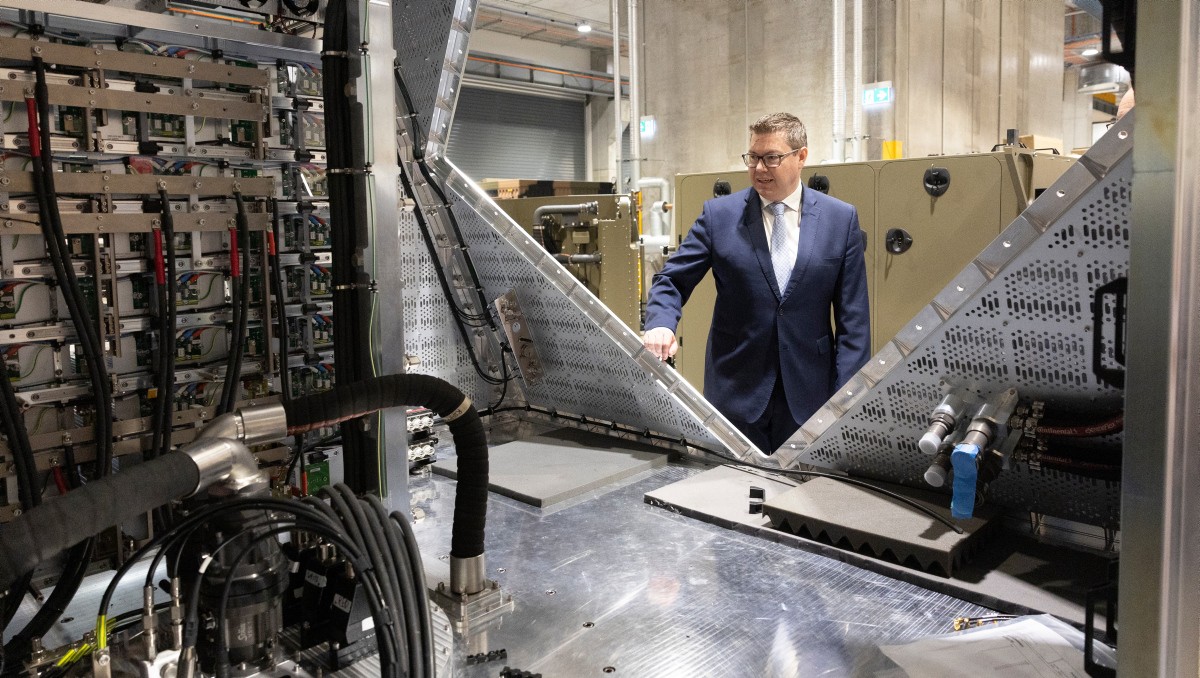Book Review - Field Artillery and Firepower
Field Artillery and Firepower
Written by: Major General J. B. A. Bailey,
Naval Institute Press, Annapolis, MD, 2004,
ISBN: 9781591140290, 633pp.
Reviewed by: Michael Evans, Head of the Land Warfare Studies Centre and coeditor of the AAJ.
When this book was first published in 1989 by the then Major Jonathan Bailey of the Royal Artillery, it rapidly became known as the best single source on field artillery in the English language. Bailey’s brilliant study did for field artillery what Richard Simpkin’s work did for armour in the latter’s classic 1979 study, Tank Warfare. Fifteen years on, Bailey, now a British major general, has produced a second edition that has been updated to explain the use of artillery firepower in the information age. For artillerists in the Australian Army, Bailey’s book is essential reading.
Non-artillerists, however, should not be put off by the expert technical detail of General Bailey’s sweeping study. This is the kind of book that, because of its subject matter, involves the author in a wide-ranging survey of modern warfare. As a result, used intelligently by the non-specialist, Bailey’s work is capable of yielding a treasure trove of insights of great value to every military professional and to serious students of military operations. Of particular interest to uniformed practitioners, and to those concerned with military theory, will be General Bailey’s observations on the future of war in parts one and four of the book.
In 1989, Bailey observed in the first edition of Field Artillery and Firepower that ‘the significance of the deep battle will soon be comparable with that of the close battle of forty or seventy years ago; and artillery will be judged in future primarily by its performance in this engagement, not in close support’. The veracity of this observation has grown over the past decade and a half. Before 1914, armed conflict was essentially a two-dimensional linear encounter. What mattered was the resolution of the close battle in pitched combat. World War I changed this situation in that close battle became siege-like and characterised by bloody stalemate. In 1917–18, the advent of a military revolution based on accurate indirect artillery fire made progress possible by enabling the simultaneous engagement of targets throughout the two-dimensional area of the battlefield by way of the third dimension: the deep battle.
During the Cold War era, the deep battle was seen as the facilitator of the decisive close battle, but in the post–Cold War period, the deep battle increasingly came to be seen as the potentially decisive one. For Bailey, this reality too is changing as critical targets are now to be found throughout the volume of all three dimensions of the battlespace. He notes:
Just as indirect fire dominated warfare of the twentieth century, which ended with the predominance of the deep battle over the close, so the early 21st century will see the development of new systems to engage targets directly ‘above’ in the third dimension, and with many sources of fire simultaneously throughout the battlespace.
As a result, perhaps the main difficulty facing Western armies today is the need to balance resources and weapons systems for both close and deep battle, as well as retaining adequate combined-arms capability. The author predicts an increased role for artillery in the delivery of joint effects, re-emphasising his 1989 view that indirect-fire systems based on rapidly developing technologies are likely to become the most important on the battlefield. Moreover, surface-to-surface artillery will be a critical component of an ever more complex joint system of fires.
Bailey undertakes an excellent analysis of the significance of the emergence of the battlespace. He notes that, while in the Cold War the battlefield was rigidly structured—with NATO adopting a linear defence for close, deep and rear battle— after the end of the Cold War, linear deployments became less relevant. Using the terms close, deep and rear in ways that referred to specific, quantifiable space became unsatisfactory. In the 1990s, the idea of the battlefield was replaced by that of the battlespace, incorporating the third dimension of munitions, manned and unmanned aircraft and the electromagnetic spectrum.
The notion of volumetric depth came to be seen as the principal means of overwhelming an opponent by using multiple types of attack or ‘multidimensional simultaneity’. Using indirect fire, a successfully executed deep battle shapes the close battle and helps obviate the need for a costly encounter between manoeuvre forces. For this reason, long-range precision attack systems have become popular in advanced armies. Attack helicopters, aircraft and rockets, and in the future unmanned aerial vehicles (UAVs) have the potential to shape the battlespace in a way that saves lives when the close encounter occurs.
Reflecting on contemporary military theory, Bailey observes that the operational aim is no longer to fight sequential battles against predictably advancing echelons of a Soviet-style enemy, but to be able to engage targets throughout the battlespace simultaneously. The objectives are to use multidimensional fires in order to maximise shock and disruption, and to leverage accumulated pressures against the will of the enemy commander. Bailey believes that such systems as ISTAR (intelligence, surveillance, target acquisition and reconnaissance), GPS (global positioning systems) and UAVs, alongside networked combined-arms teams of manned and robotic ground systems, will change the way in which armies will deliver the effects of fire.
The new advent of precision air–ground RMA-style technologies will, Bailey believes, reshape battlespace geometry as radically as indirect fire did in the early 20th century. The adoption of precise systems on land and in the air promises to transform the way in which land warfare is conceived. Bailey observes:
The new technologies of precision will ... expand the land components battlespace ... into the third dimension, making the ‘above’ as vital as ‘close’, ‘deep’, and ‘rear’. High-payoff moving targets will increasingly be located in three dimensions and require precise engagement by responsive fire systems.
The author notes that, in the Second Gulf War of 2003, air interdiction, close air support, artillery fire and ground manoeuvre were all integrated, while the role of individual soldiers has become of increased value in calling for fire. The management of time has also become a key issue in warfighting. Indeed, the factor of time is increasingly assuming the status of the fourth dimension of the battlespace. Mastery of the battlespace by precision fire and manoeuvre must face the inevitable contraction of vital time. As Bailey puts it,
seizing and holding the initiative is to time as seizing and holding vital ground is to maneuver. Pegging out the boundaries of this battlespace and turning the attrition of time on an opponent is an accomplishment of strategic command and operational art, but a daunting task.
The premium on time places a requirement for the application of massed effects from all weapons systems and for decisive outcomes at all levels of war in order to weaken an opponent’s will. Command skills are likely to lie not so much in massing fires, but in controlling ISTAR resources and bringing a mass of precise effects to bear against enemy targets in an efficient manner. Warfighting is likely to fuse manoeuvre with fire, while digitisation permits seamless engagement of targets. The electromagnetic character of the battlespace will place a premium on bandwidth. The requirement for bandwidth for communication and information systems and for ‘sensors to shooters’ is likely to be as vital to operational success as a steady supply of fuel and ammunition.
The application of military force in the future will also be joint service in character. Separate land, maritime and air components may continue as the providers of capabilities, but commanders will increasingly be joint commanders of specifically packaged forces with appropriate headquarters. As such they will need speedy access to a full spectrum of effects supplied by all systems, whether hand-held or from satellites. Indeed, Bailey believes that the trend towards joint warfare is likely to increase. In joint operations, a combination of precision weapons, information networks and robotics will continue to expand the battlespace, altering the relationships between the arms and services. ‘Joint activities’, predicts the author, ‘will become ever more integrated in the coming decades, to the extent that the term joint, which entails cooperation between separate entities, may come to seem an underestimation of the fundamental new relationships’.
After finishing Bailey’s book, one realises the staggering complexity of the modern operational battlespace, with its plethora of electromagnetic and aerial assets. Only the close study of military operations can provide a necessary level of understanding of contemporary warfare. War may, as French Prime Minister, Georges Clemenceau, once famously argued, be too important to be left to generals, but equally, its technical complexity is fast outstripping the grasp of most politicians. If ever there was an intellectual challenge for the West’s strategic studies community, it is that of reforming its curricula to embrace not only policy issues, but also the detailed study of military operations. Unless this vital educational reform is accomplished, the policy makers of tomorrow will be intellectually incapable of comprehending, still less advising on, the anatomy of modern military conflict.




